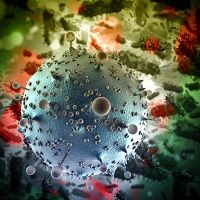Article
Scientists Uncover New Stage of HIV Life Cycle
Author(s):
A new imaging technique highlighted an early phase of the human immunodeficiency virus (HIV) life cycle which can help treatment attack the infection at its core.

A new imaging technique highlighted an early phase of the human immunodeficiency virus (HIV) life cycle which can help treatment attack the infection at its core.
Principal investigator Abraham L. Brass, MD, PhD, and colleagues from the University of Massachusetts Medical School (UMMS) created ViewHIV, a new way to look at HIV’s intra-nuclear migration. Their findings published in Cell Reports revealed an important part of the infection process that has been kept in the background.
“Researchers have been studying HIV for 30 years, but we still didn’t have a really good way to look inside infected cells. We thought that if we could just see what’s going on, then we could get a better idea of what the virus is doing and how to stop it,” co-lead author Jill Perreira, a research associate at UMMS, said in a news release.
- The MD Magazine HIV/AIDS condition center
ViewHIV was developed from existing technologies and uses the very sensitive fluorescence in situ hybridization (FISH) in combination with a monoclonal antibody. This binds to the viral capsid — which is the protein shell of the virus – which then generates images from inside the infected host cell. Brass explained that the key part of the strategy is that a protease was used during the preparation phase of the sample which enabled the researchers to see images of the capsid inside of the nucleus.
“There are certain characteristics of a virus you can only learn about by keeping it intact and seeing it in action in single cells,” Perreira explained.
This process allowed the team to look at the movement of the viral capsid, DNA, and RNA. They tracked the virus and its capsid through the cytoplasm, nuclear membrane, and nucleus where it fixated itself in the host cell’s DNA. This indicates that the viral capsid is crucial in how the virus enters the nucleus, and further analysis revealed that the proteins CPSF6 and TNPO3 helps carry out the process as well. The research shows that HIV enters the nucleus with the viral capsid, which squashes the previous hypothesis that it gets rid of it first.
“It’s important to know more about these early infection events so we can come up with ways to stop the virus from becoming part of our DNA and infecting us for life,” Brass concluded. “With our technique we can better determine how HIV establishes itself into our DNA and develop new ways to stop that from happening.”
What to Read Next >>> New Non-Latex Condom Enhances HIV Protection
























